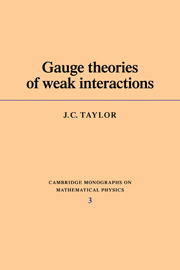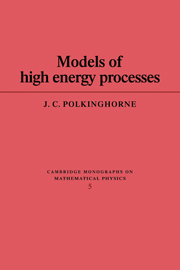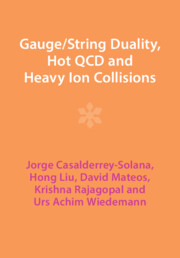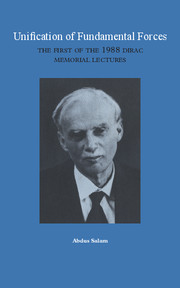Gauge Theories of Weak Interactions
The interaction between neutrinos and matter is an example of the type classified as weak, and such interactions also allow many elementary particle decays and the beta decay of the nuclei. The development of gauge theories has provided the basis for a complete and consistent account of weak interactions, at the same time displaying their unity with electromagnetism. Gauge theories in this context were first proposed in 1967. Rapid mathematical development took place from 1971, and on this book's publication in 1979, a moderate amount of empirical verification had been achieved.
Product details
No date availablePaperback
9780521295185
186 pages
229 × 152 × 11 mm
0.28kg
Table of Contents
- Foreword
- Preface
- Notation and conventions
- 1. Introduction
- 2. Weak interactions and vector mesons
- 3. Photons
- 4. The Yang–Mills field
- 5. Spontaneous breaking of symmetries
- 6, Spontaneous breaking of local gauge symmetries
- 7. Topology and symmetry-breaking
- 8. Theory of leptons
- 9. A provisional model of hadron weak interactions
- 10. Feynman's path-integral formulation of quantum mechanics
- 11. Quantization of gauge fields
- 12. Ward–Takahashi identities
- 13. Regularization and anomalies
- 14. Renormalization of gauge theories
- 15. Symmetry-breaking and mass-differences
- 16. Higher-order corrections
- 17. CP and T violation
- 18. Gauge theories and strong interactions
- Index.








